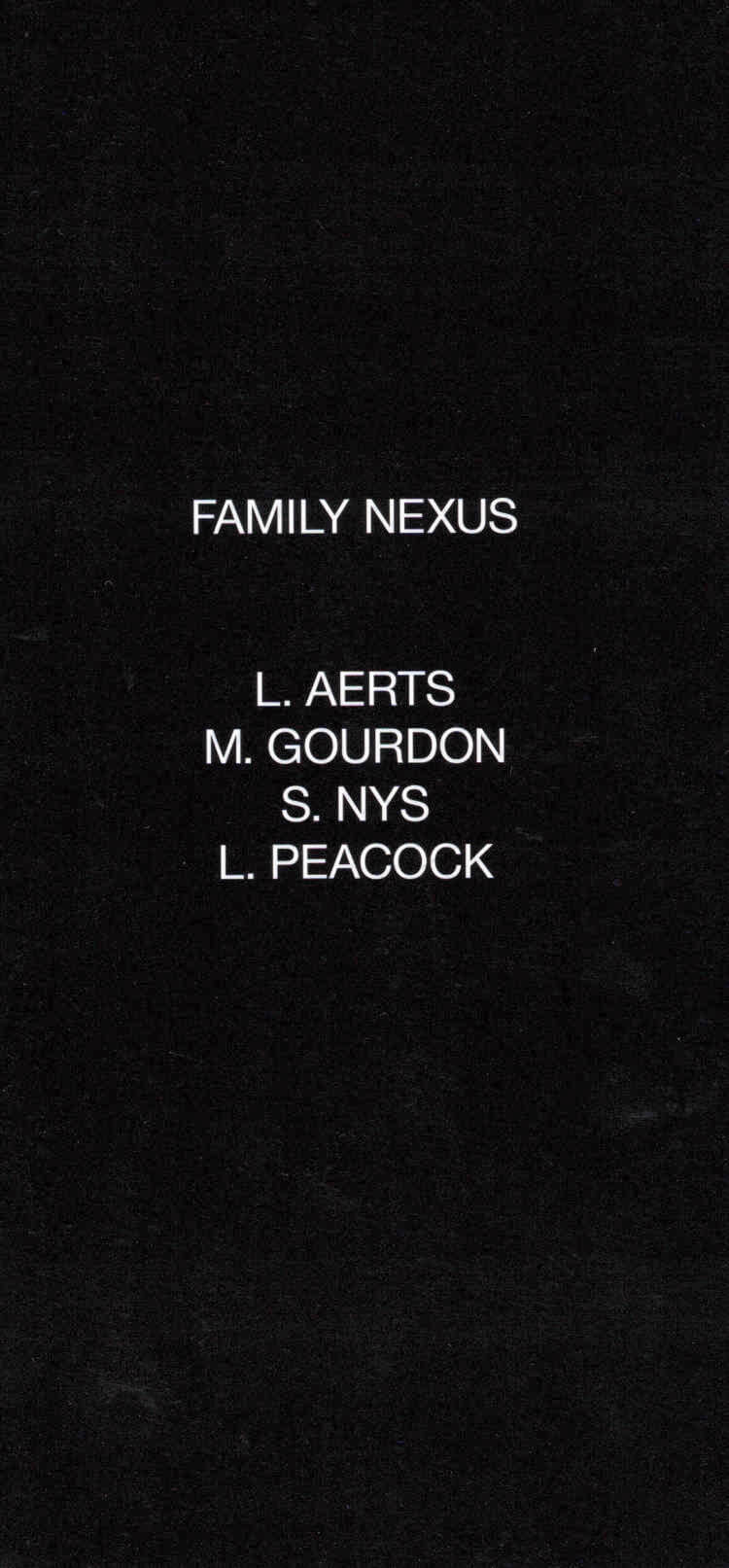Leila Peacock
Leila Peacock

Family Nexus
Sophie Nys, Liene Aerts and 2 more
In April 2019, Sophie Nys presented the solo exhibition Family Nexus at KIOSK. In psychology, a family nexus stands for a vision that is shared by the majority of family members, often unconsciously and for several generations long, and is upheld in the context of events both within the family and in its relationship to the world. Among other, the monumental, stretched out net in the dome space was a symbol of this family dynamic.
Two years later, the theme is still working its way through the above mentioned heads. The shared interest of Nys, Gourdon, Aerts and Peacock leads to a collaboration in the form of a book that, just like the exhibition, can be read as a net of (un)coherent intrigues and knots in which no position can be neutral. They set up a network of characters. Together they represent all kinds of (human) connections. Family Nexus is a story about everyone and no one in particular. Who in this book is playing the role of the Nobody, the household’s so-called 'identified patient', or scapegoat, and which pots and pans has slipped through this character’s fingers?
Co-production: KIOSK and BOEKS.
And more

Divided we stand, together we fall
This artist's book presents a set of photographs made by Belgian artist Sophie Nys during her stay in Zurich. It features each of the modernist fountains produced by designer Alfred Aebersold in the 1970s and scattered throughout the Swiss city. The images are associated with amusing and clever captions written by Leila Peacock, a Scottish artist living in Zurich.
In 1973, Alfred Aebersold won the competition organized by the Water Supply Department of Zurich for the design of a fountain. It was to be the visible part of a vast, autonomous and secured water supply system of 89 identical fountains distributed throughout the territory of the city. The context was that of the cold war. The threat, invisible but permanent, was the contamination of the public water supply network by an external agent. Aebersold—trained as an interior designer and founder, together with Jörg Hamburger and Herbert Merz, of studio Gruppe 3 in 1961—was representative of a Swiss design that followed the formal vocabulary of Max Bill. Bill contributed from the 1940s onward to the dissemination of ways of living and Western values to question those of Soviet ideology. Designed in the 1970s but recalling through its formal vocabulary a modernist, stable, and reassuring sculptural language expressed in the organicity and solidity of its forms, this fountain presents itself as a historical paradox of sorts. But it also presents itself as a visual symptom, set within the public space, of a necessity for a continued, ahistorical defense. The context changes, but the threat remains. And the fountain, masking its purpose in the functionality of its bowels—according to a Duchampian modus operandi, in which the sense one could assign to forms is obscured and diverted—, tirelessly spurts the purity of its liquid.

DEARS No. 2 HOPE.FULLY
Robert Steinberger, Delphine Chapuis Schmitz and 1 more
DEARS is a print magazine for transversal writing practices at the crossroads of art, poetry and experimental writing. It brings together authors and writers from different backgrounds and constitutes a dedicated platform for texts escaping the usual genres and disciplinary boundaries.
DEARS promotes the exploration of new forms of language as a way to foster new forms of living together, and emphasizes the growing relevance of trans- versal writing practices in this respect.
DEARS issue no. 2 / HOPE.FULLY / Spring 2021
With texts by Ann Cotten, Barbara Sirieix, Delphine Chapuis Schmitz, Heather Phillipson, Ines Marita Schärer, Kayije Kagame, Legion Seven, Leila Peacock, Louise Guerra Archive, Tarek Lakhrissi, and an epigraph by Rebecca Solnit
Editors are Delphine Chapuis Schmitz, Nicole Bachmann and Robert Steinberger